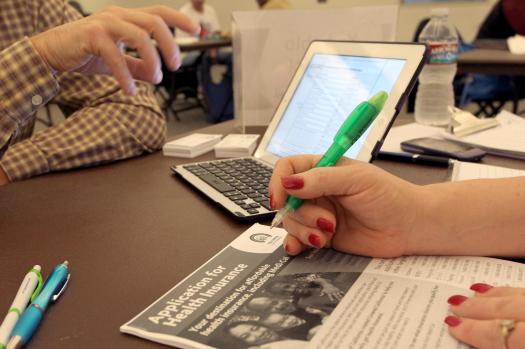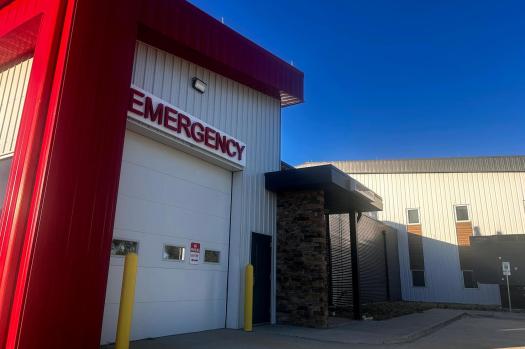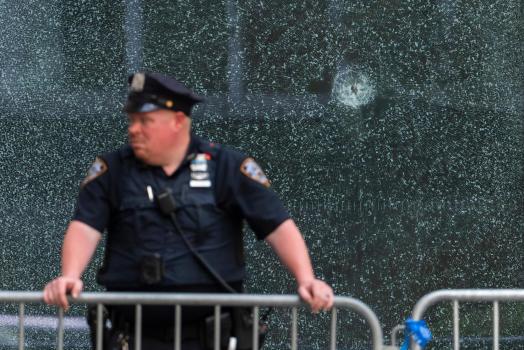According to a recent study, states with more liberal gun laws had higher death rates and more pronounced racial inequities, but firearms are the leading cause of death for American children and teenagers.
The study, which was released on June 9 in the medical journal JAMA Pediatrics, examines patterns in state firearm laws and child fatalities since 2010, following the historic McDonald v. City of Chicago ruling by the U.S. Supreme Court. The decision overturned the city’s handgun ban, opening the door for several states to ease gun ownership and carry restrictions.
Based on the severity of their gun laws, the study’s authors divided the states into three categories: severe, permissive, and most permissive. These regulations include background checks, safe storage rules, and so-called Stand Your Ground laws. The researchers looked at the children’s race as well as the rates of suicide and homicide.
The researchers used statistical techniques to determine that, between 2011 and 2023, there were 6,029 additional deaths in the most permissive states as opposed to the number of deaths that would have been anticipated under the states’ pre-McDonald regulations. The states in the middle category had 1,424 excess deaths.
In an interview, main author Dr. Jeremy Faust, an emergency physician at Brigham and Women’s Hospital in Boston, stated that 23,000 deaths actually happened during the post-decision period, compared to an estimated 17,000 deaths.
There were statistically significant drops in the rates of pediatric firearm deaths in four of the eight states with the strongest laws: California, Maryland, New York, and Rhode Island. Rates increased in Connecticut and Illinois, which were directly impacted by the court’s ruling in the McDonald case. The changes in New Jersey and Massachusetts were not statistically significant.
Related Articles
-
Battenfeld: Battle is on over who will carry MAGA torch after Trump
-
Lucas: National Guard in Democrat spin machine
-
Trump says Gabbard was wrong about Iran and Israeli strikes could be very hard to stop
-
San Diego clergy visit federal immigration court to bear witness during crackdown on migrants
-
Court blocks Louisiana law requiring schools to post Ten Commandments in classrooms
Of the 41 states in the two permissive categories, the rate rose in all but four (Alaska, Arizona, Nebraska, and South Dakota). (Hawaii was excluded from the analysis because of its low firearm fatality rates.)
In the 41 states with laxer gun regulations, the biggest rise in gunshot mortality occurred among non-Hispanic Black children and teenagers. The states with stricter restrictions saw a substantially smaller increase in those youths’ mortality rates.
According to experts, the survey emphasizes how effective policy may be in reducing the number of children and teenagers killed by firearms. The analysis was released less than a month after the federal Centers for Disease Control and Prevention released a report on children’s health that claimed to highlight the factors contributing to children’s poor health in America but omitted information on firearm injuries, which were the top cause of death for children and teens in 2020 and 2021.
Surgeon for trauma Gun violence is studied by Dr. Marie Crandall, a professor at Cleveland’s Case Western Reserve University School of Medicine and chief of surgery at MetroHealth Medical Center. She used to work at an urban trauma center in Jacksonville, Florida, where she regularly witnessed kids and teenagers trapped in gun violence.
It is a loss for me to witness kids who have ten holes in them that I am unable to fix. “That was a totally avoidable death, and having to have those conversations with families when we know as a society that there are things we could do to de-escalate is really emotionally taxing,” said Crandall, who was not involved in the current study.
According to the analysis, the number of children and teens killed by firearms in her state of Ohio rose from 1.6 per 100,000 children in the decade prior to the McDonald decision to 2.8 following it. One of the states with the most lenient laws was Ohio.
The analysis supports earlier findings that state regulations pertaining to kid access to firearms, such as background checks and safe storage, are generally linked to a lower number of child firearm fatalities.
We are aware that preventing child access reduces child suicides and unintended injuries. According to Crandall, the risk of childhood injuries is reduced when firearms are locked, empty, and kept apart from ammunition. Reducing childhood injuries is another benefit of stricter regulation of those goods.
However, she stated that when the present administration rejects gun violence as a public health issue, it is difficult to have hope for stricter regulations. The last U.S. surgeon general’s advice from the previous year, which highlighted gun violence as a public health emergency, was removed by the Trump administration early this year.
The new study’s lead author, Faust, emphasized that the Make America Healthy Again Commission’s report on children’s health noticeably omitted firearm-related injuries and fatalities. He claimed that the exclusion of them demonstrates how a serious public health crisis for children in America has become politicized.
According to Faust, it’s difficult to believe them if they’re leaving out the primary reason of death. They’re shanking and whiffing. They are choosing not to do it for political reasons. They’re politicizing it, in my opinion, by leaving it out.
Both Faust and Dr. Chethan Sathya, a pediatric trauma surgeon who leads the Center for Gun Violence Prevention at the Northwell Health system in New York, cited the creation of car seat laws and public health education as examples of preventive measures that have contributed to a decrease in childhood deaths. They are in favor of a similar strategy to reduce the number of juvenile shootings.
Sathya, who was not engaged in the study but is in charge of his hospital’s weapon injury prevention initiatives, stated that we truly need to approach this issue from a public health framework rather than a political one, and we have done so with other situations in the past. This is unquestionably a public health concern.
The child firearm fatality rate in Louisiana, which the research classified as one of the 30 most permissive states, rose from 4.1 per 100,000 children prior to McDonald’s to 5.7 following it, making it the highest rate in the US. Although the study only covers 2023, the state passed a permitless carry law this year that permits individuals to carry firearms in public places without having to submit to background checks. Additionally, a bill that would have made poor firearm storage a criminal was defeated by Louisiana lawmakers only last month.
During the floor debate, Matthew Willard, a Democratic state representative from Louisiana and the law’s proponent, stated that the safe storage legislation was intended to safeguard children. According to the research arm of Everytown for Gun Safety, which promotes more stringent gun access laws, Louisiana had the greatest rate of unintentional shootings by minors from 2015 to 2022. On the floor, Willard mentioned that figure.
Republican opponents, however, said that Willard’s plan would violate locals’ gun rights and make it more challenging for them to defend themselves with firearms.
No one should enter our homes and give us instructions on how to use our firearms. During the argument, Republican state representative R. Dewith Carrier stated, “I think this is ridiculous.”
State Representative Troy Romero, another Republican opponent, expressed his worry that if a firearm was kept away, it would be more difficult for an adult to get to it immediately.
If it’s hidden in a closed drawer, how on earth would you be able to keep your family safe at two or three in the morning if someone breaks in? “I said,” Romero said.
Assistant professor Julia Fleckman, who studies gun violence, and her colleagues at Tulane University in New Orleans have begun gathering information about the effects of the state’s permitless carry legislation.
According to Fleckman, children are disproportionately affected by the decisions made by lawmakers, making them our most vulnerable citizens. They have little influence on this or the choices we’re making.
The mortality rate rose from 2.3 to 3.9 per 100,000 children in South Carolina, another state with a high level of permissiveness, both before and after the McDonald ruling. South Carolina Democratic state Rep. JA Moore, who lost his adult sister in the 2015 racistshootingthat killed nine at a Charleston church, said state policy alone isn t enough. He implored his colleagues to also examine their perception of guns.
We have a culture here in South Carolina that doesn t lend itself to a more safe South Carolina, said Moore, who added he s been advocating for background checks and stricter carry laws. There is a need for a culture change in our state, in our country, when it comes to guns and our relationships with guns as Americans, realizing that these are deadly weapons.
And investing in safer neighborhoods is crucial, he said.
People are hurt by guns in places that they re more comfortable, like their homes in their own neighborhoods, he said.
Community-based interventions are important to stemming violence, experts said. Crandall, the Cleveland surgeon, said there s emerging evidence that hospital-based and community-based violence prevention programs decrease the likelihood of violent and firearm-related injury.
Such programs aim to break cycles of violence by connecting injured patients with community engagement services. After New York City implemented its hospital-based violence interruption program,two-thirdsof 3,500 violent trauma patients treated at five hospitals received community prevention services.
After her 33-year-old son was killed in her neighborhood in 2019, Michelle Bell startedM-PAC ClevelandMore Prayer, Activity & Conversation a nonprofit collaborative of people who have lost loved ones to violent crime. She s encountered many grieving parents who lost their children to gunfire. The group advocates and educates for safe storage laws and holds peer grief support groups.
She also partners with the school district in a program that shares stories of gun violence s long-lasting impact on surviving children, families and communities and nonviolent interpersonal conflict resolution.
Oftentimes, the family that has lost the child, the child s life has been taken by gun violence, there are other children in the home, she said.
It s so devastating. It s just so tragic that the No. 1 cause of death for children 18 and under is gun violence, Bell continued.
The decision to pull a trigger, she said, changes a lifetime of not only yours, but so many other people.
Statelineis part ofStates Newsroom, a national nonprofit news organization focused on state policy.
2025 States Newsroom. Visit atstateline.org. Distributed by Tribune Content Agency, LLC.











